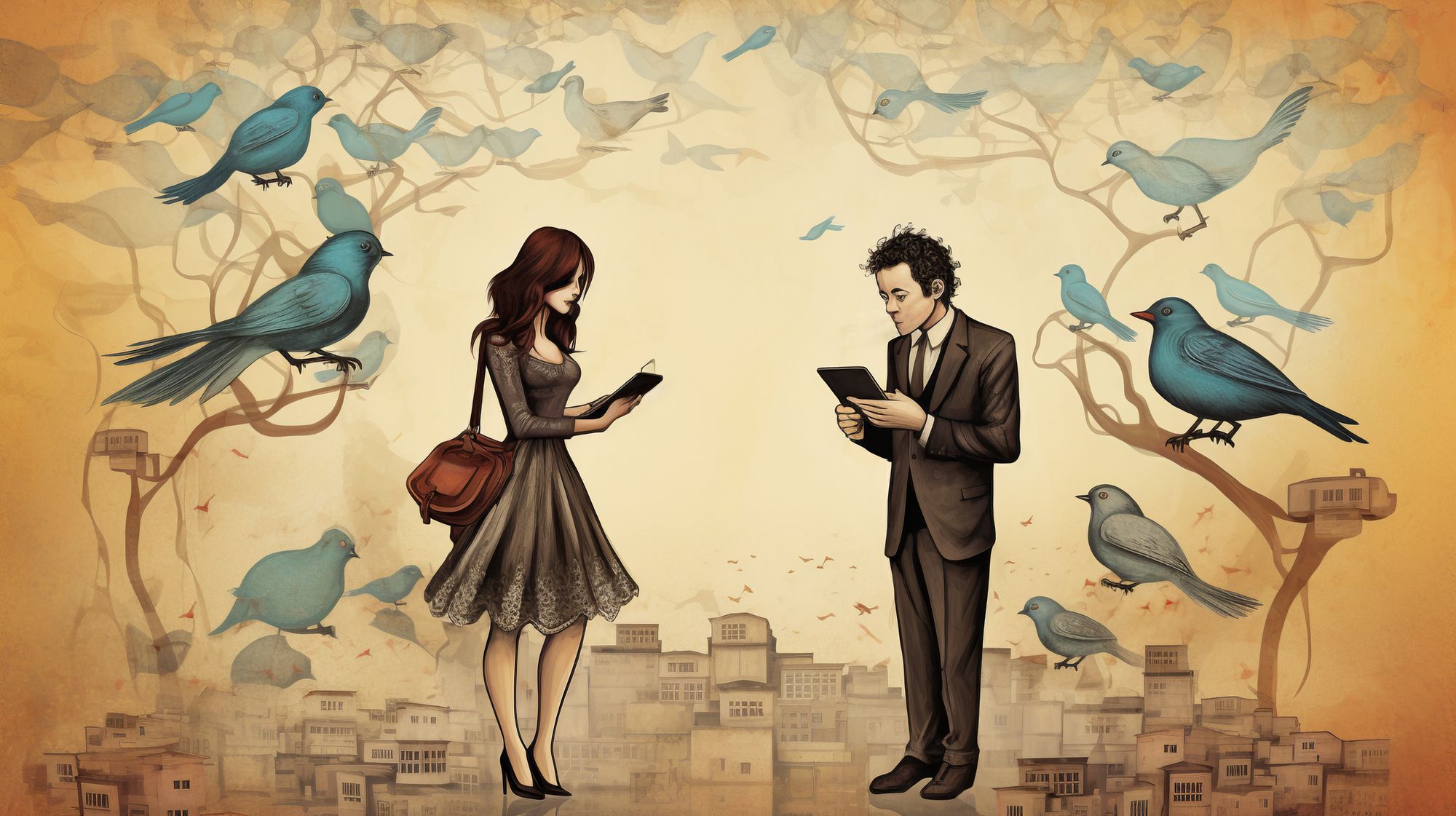Sell the harder story, don’t just milk the easy one
Too many editors hide behind analytics when making bad choices on which stories to prioritise. And what's going on with the would-be Twitter replacements?

I’m still deep in the video piece I threatened the week before last. It’s grown dramatically from a quick thousand words analysing some Reuters Digital News Report findings, into a multi-thousand word thesis of the future of platform video.
I’ve put it to one side, and gone back to regular posts. When it’s done, I won’t send it out aa a newsletter, because it’s too long now for that. But I will prominently link it at the start of a newsletter when it’s ready. Those of you diehards who are reading via RSS will probably see it first…
Meanwhile, let’s look at the uncomfortable journalistic choice most people made last week, and the current landscape of Twitter competitors.
Tales of two boats

I’m far from the first or the loudest to note that the coverage given to the death of five rich men in a submersible has been given far more coverage than that of hundreds of refugees on a fishing boat. One speaks to geopolitical issues, and one to the folly of the rich. By any objective standards, the refugee story should have attracted more coverage.
But I know the reasons why. They’re not hard. One is our fault as readers, but the other is also our fault, as journalists. There’s a weakness in human psychology that means we find it much easier to empathise with a few people whom we can put names and faces to. That’s just life – it means we have to work harder to engage people in the more important story.
But many newsrooms will hide behind the analytics. “The submarine story was doing #numbers, so of course we leaned into it,” they say. Well, yes, but that’s a feeble excuse.
Let’s examine why.
The named versus the faceless
One issue is human psychology. Once we have names and faces for the people, they somehow become more real. The names of the people lost on the submersible were easy to obtain, and it was easy to find out more about them.
Neither was true for the hundreds of people lost on the Greek fishing boat. As Arwa Mahdawi put it in The Guardian:
It’s hard to get your head around those numbers, isn’t it? It’s hard to absorb that amount of anguish. And that’s precisely the problem. If you find yourself more captivated by the story of five rich people in a submersible rather than the 750 people who sank on a fishing trawler, it’s not because you’re a bad person. It’s because it’s human nature to feel overwhelmed by suffering at scale; it’s called psychic numbing. As the saying goes, one death is a tragedy, a million deaths is a statistic.
That means we need to find ways of humanising the story to get people to engage with it. That’s much harder, but it’s doable. Nearly eight years ago, we were given a vivid and shocking example of just that.
The analytics cycle
There’s also a choice being made by newsrooms. Analytics don’t tell you what to do (or, at least, they shouldn’t). They should inform your decision-making. And sometimes, when you see a manifestly more important story getting beaten out by a less important one, you should focus on telling the more important story better. Journalism shouldn’t be just about mining the less important story for every drop of traffic you can.
There may not be one Twitter replacement

For nine months now, since Elon Musk took Twitter and made it manifestly worse, people have been looking for its successor. There’s a problem with that idea, though. In social media history, there has never been a situation where one network directly replaced another. The closest candidate would be MySpace to Facebook — but MySpace ever had the multi-generation appeal that Facebook managed at its peak.
The various potential competitors out there are all running into their own issues as they try to grow. Here’s a quick round-up:
Turbulent Bluesky
Bluesky is still invite only, and invites are trickling out slowly enough that the early wave of enthusiasm to get one has passed. I’m still not on there, languishing on the waiting list like so many others, but it’s noticeable that the early buzz has faded:
People are brought into Bluesky via the waiting list (something like 2 million people) and invite codes. Distribution of invite codes is arbitrary. Supposedly, users get one invite code every two weeks. Many people have gotten zero invite codes. Others have gotten many invite codes and occasionally post asking for recommendations for people to be invited. A few people got a lot of codes early and seem to be spokespeople for the team.
This produces a hierarchy of users – those blessed with invite codes and the outsiders. It’s like high school.
They’re in increasing danger of the wave of interest having passed before the majority of people can get in.

Misguided Mastodon
Mastodon, a federated social network built on the ActivityPub protocol, seemed like the big hope to replace Twitter late last year. However, some people who went all in on Mastodon have been drifting back to Twitter, and growth has manifestly stalled. What’s happening?
I know multiple people who tried it and then gave up, due to lack of engagement with what they were posting, lack of people to follow, inability to deal with the platform’s technical foibles, or worse because they found the experience actively unpleasant. Something has gone badly wrong.
I’d suggest two things:
- A user-experience that’s still too geeky
- An often brittle and authoritarian community
The people who run the project are the problem, argues Bloomface (his persistent pseudonym – he doesn’t reveal his real name):
The people who use it day in day out as their primary or only social media are weird relative to the rest of the Internet. While they’re probably quite happy with Mastodon’s awkward onboarding UX, or the piss-poor approach to cross-instance following, and get frustrated by newbies asking “I’m on mastodon.social, do I have to register on mstdn.io to follow someone there?”, this is because they are used to it.

Terrifying Threads
Remember I said that Mastodon uses a protocol called ActivityPub? Well, other services can use it, too. Micro.blog, which I use, integrates with ActivityPub, to allow cross-posting and cross-following with Mastodon. And now Meta is coming to play, with its Instagram-centric Twitter competitor Threads believed to be ActivityPub compatible.
That sounds great, right? Mastodon servers for more geeky types, Threads for the masses, and all interoperable? Yes, well, many Mastodon types disagree – and a bunch have pledged to de-federate from Meta’s service as soon as it appears.
Ian Betteridge offers a defence of their position:

Tentative t2
t2 is the working name for a new Twitter competitor from a bunch of ex-Tweeps. It looks interesting, but is in its very early stages, and is coming into a very crowded landscape.
You can follow me there, if you have an account, and I have one invite to give away to the first reader who requests it…

And so…
I see little compelling evidence that my advice from a few months back was wrong. You’ve got time. None of these services have established themselves as a clear leader yet.
Quickies
- 🤖💩 AI is already polluting the web and search results with garbage content. This is a real risk to Google’s business. And to ours.
- ⌛️You’ve got four days left to switch to Google Analytics 4, if you haven’t done so already. Here’s a quick primer.
- ♻️Why newsletters should repeat themselves. I’ve actually tried to avoid doing this, but I suspect I’m making an error.
- 📉 Organic Facebook traffic back to websites is plummeting again. Hearing anecdotally from audience folks that this is absolutely happening.
- 📨 More on what Apple’s up to with click tracking
One Thought-Provoking Read
Researchers who study “intel” forums — places where men who consider themselves to be “involuntarily celibate”, or unsuccessful with women — find themselves sympathising with the participants. Why? Incels have terrible self-image problems:
“We also noticed that incels targeted themselves, seeing themselves as failed men, seeing their bodies as ugly, and seeing themselves as being doomed to be ‘forever alone,'” Halpin said. “The way they talk about themselves made most of us on the research team sympathetic to a degree, because it is quite depressing.”
Nothing excuses some of the things that incels do and say. But this does suggest that society is letting some men fall through the cracks in a way that’s making the rest of our lives worse. Prevention could well be more effective than cure.











